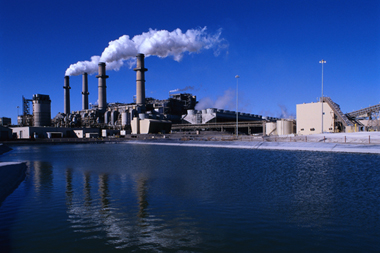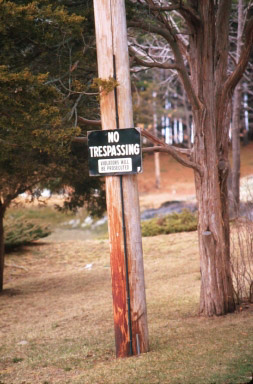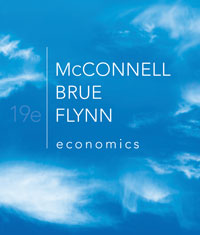Economics (McConnell) AP Edition, 19th EditionChapter 5:
Market Failures: Public Goods and ExternalitiesOrigin of the Idea <a onClick="window.open('/olcweb/cgi/pluginpop.cgi?it=gif::::/sites/dl/free/0217511447/124310/origins_image.gif','popWin', 'width=70,height=90,resizable,scrollbars');" href="#"><img valign="absmiddle" height="16" width="16" border="0" src="/olcweb/styles/shared/linkicons/image.gif"> (1.0K)</a> <a onClick="window.open('/olcweb/cgi/pluginpop.cgi?it=gif::::/sites/dl/free/0217511447/124310/origins_image.gif','popWin', 'width=70,height=90,resizable,scrollbars');" href="#"><img valign="absmiddle" height="16" width="16" border="0" src="/olcweb/styles/shared/linkicons/image.gif"> (1.0K)</a> | 5.1 Consumer Surplus |  <a onClick="window.open('/olcweb/cgi/pluginpop.cgi?it=gif::::/sites/dl/free/0217511447/124310/origins_image.gif','popWin', 'width=70,height=90,resizable,scrollbars');" href="#"><img valign="absmiddle" height="16" width="16" border="0" src="/olcweb/styles/shared/linkicons/image.gif"> (1.0K)</a> <a onClick="window.open('/olcweb/cgi/pluginpop.cgi?it=gif::::/sites/dl/free/0217511447/124310/origins_image.gif','popWin', 'width=70,height=90,resizable,scrollbars');" href="#"><img valign="absmiddle" height="16" width="16" border="0" src="/olcweb/styles/shared/linkicons/image.gif"> (1.0K)</a> | 5.2 Externalities |  <a onClick="window.open('/olcweb/cgi/pluginpop.cgi?it=gif::::/sites/dl/free/0217511447/124310/origins_image.gif','popWin', 'width=70,height=90,resizable,scrollbars');" href="#"><img valign="absmiddle" height="16" width="16" border="0" src="/olcweb/styles/shared/linkicons/image.gif"> (1.0K)</a> <a onClick="window.open('/olcweb/cgi/pluginpop.cgi?it=gif::::/sites/dl/free/0217511447/124310/origins_image.gif','popWin', 'width=70,height=90,resizable,scrollbars');" href="#"><img valign="absmiddle" height="16" width="16" border="0" src="/olcweb/styles/shared/linkicons/image.gif"> (1.0K)</a> | 5.3 Coase Theorem |
 <a onClick="window.open('/olcweb/cgi/pluginpop.cgi?it=gif::::/sites/dl/free/0217511447/124310/origins_image.gif','popWin', 'width=70,height=90,resizable,scrollbars');" href="#"><img valign="absmiddle" height="16" width="16" border="0" src="/olcweb/styles/shared/linkicons/image.gif"> (1.0K)</a> <a onClick="window.open('/olcweb/cgi/pluginpop.cgi?it=gif::::/sites/dl/free/0217511447/124310/origins_image.gif','popWin', 'width=70,height=90,resizable,scrollbars');" href="#"><img valign="absmiddle" height="16" width="16" border="0" src="/olcweb/styles/shared/linkicons/image.gif"> (1.0K)</a> | 5.1 Consumer Surplus |
Alfred Marshall is credited with developing the concept of consumer surplus. Although the idea originated with Jules Dupuit (1804-1866), a French economist, Marshall first used the term and refined the concept. As Marshall explained consumer surplus, "The price which a person pays for a thing can never exceed, and seldom comes up to that which he would be willing to pay rather than go without it: so that the satisfaction which he gets from its purchase generally exceeds that which he gives up in paying away its price; and he thus derives from the purchase a surplus of satisfaction. The excess of price which he would be willing to pay rather than go without the thing, over that which he actually does pay, is the economic measure of this surplus satisfaction. It may be called consumer’s surplus."(1) Alfred Marshall (1842-1924) was born in Clapham, England, the son of a cashier of the Bank of England. Despite his father’s wishes that he study for the ministry at Oxford, Marshall attended Cambridge University, where he studied mathematics, physics and economics. In 1877 he married one of his students, Mary Paley. They collaborated on his first book, The Economics of Industry, published in 1879.(2)
The leading economist of his time, Marshall belonged to what economists refer to as the Neoclassical school of economic thought. Much of what appears in your textbook comes from Neoclassical economics, and Marshall’s contributions have stood the test of time. Although Marshall used mathematics extensively in his economic models, he emphasized that the math was merely a shorthand language, and not the foundation for economic inquiry and analysis. Marshall established his own set of rules for the use of mathematics in economic theorizing: "(1) Use mathematics as a shorthand language, rather than as an engine of inquiry. (2) Keep to them till you have done. (3) Translate into English. (4) Then illustrate by examples that are important in real life. (5) Burn the mathematics. (6) If you can’t succeed in (4), burn (3). This last I [Marshall] did often."(3)
|
 <a onClick="window.open('/olcweb/cgi/pluginpop.cgi?it=gif::::/sites/dl/free/0217511447/124310/origins_image.gif','popWin', 'width=70,height=90,resizable,scrollbars');" href="#"><img valign="absmiddle" height="16" width="16" border="0" src="/olcweb/styles/shared/linkicons/image.gif"> (1.0K)</a> <a onClick="window.open('/olcweb/cgi/pluginpop.cgi?it=gif::::/sites/dl/free/0217511447/124310/origins_image.gif','popWin', 'width=70,height=90,resizable,scrollbars');" href="#"><img valign="absmiddle" height="16" width="16" border="0" src="/olcweb/styles/shared/linkicons/image.gif"> (1.0K)</a> | 5.2 Externalities |
Although Henry Sidgwick (1838-1900) first articulated the idea of spillover costs and benefits (externalities), Arthur C. Pigou (1877-1959) receives most of the credit for formalizing the concept. Pigou, a British welfare economist (meaning that his economic theories focuses on maximizing the well-being of society), studied at King's College in Cambridge and later served as the chair of political economy at Cambridge from 1908 to 1943. The previous chair, Alfred Marshall, significantly influenced Pigou's thinking, as both were concerned about how to use economic theory to promote social well-being.
 <a onClick="window.open('/olcweb/cgi/pluginpop.cgi?it=jpg::::/sites/dl/free/0217511447/124343/origin30_1.jpg','popWin', 'width=430,height=323,resizable,scrollbars');" href="#"><img valign="absmiddle" height="16" width="16" border="0" src="/olcweb/styles/shared/linkicons/image.gif"> (97.0K)</a> <a onClick="window.open('/olcweb/cgi/pluginpop.cgi?it=jpg::::/sites/dl/free/0217511447/124343/origin30_1.jpg','popWin', 'width=430,height=323,resizable,scrollbars');" href="#"><img valign="absmiddle" height="16" width="16" border="0" src="/olcweb/styles/shared/linkicons/image.gif"> (97.0K)</a> |
To illustrate the concept of spillover effects, Pigou used the example of sparks from railway engines. These sparks would ignite surrounding woodlands or farmland, destroying timber or crops. Because the owners of the land were not compensated for the damage, those directly involved in the railway transaction (for example, the railway company and passengers) were not bearing the full cost of their exchange.
Pigou illustrated the idea of spillover benefits through an example of someone planting a forest. The reforestation benefited surrounding property owners through natural seeding of their vacant land, yet no compensation was paid for the benefit. As a result, said Pigou, less tree planting occurred than was optimal from society's perspective.
|
Pigou is also known for his contributions to the aggregate demand-aggregate supply model (the "real balances effect"), and to theories of price discrimination. He also argued that a more equal distribution of income would increase social welfare. "Any transference of income from a relatively rich man to a relatively poor man of similar temperament, since it enables more intense wants to be satisfied at the expense of less intense wants, must increase the aggregate sum of satisfaction."(1) Pigou's reasoning was that the marginal utility of a dollar for a poor man was greater than for a rich man, and so by transferring dollars from the rich to the poor, the net gain in social welfare would be positive.
- A.C. Pigou, The Economics of Welfare, 4th ed. (London: Macmillan, 1932), 89. [Originally published in 1920.]
Photograph courtesy of: (c)Corbis # EIS0073;
 <a onClick="window.open('/olcweb/cgi/pluginpop.cgi?it=gif::::/sites/dl/free/0217511447/124310/origins_image.gif','popWin', 'width=70,height=90,resizable,scrollbars');" href="#"><img valign="absmiddle" height="16" width="16" border="0" src="/olcweb/styles/shared/linkicons/image.gif"> (1.0K)</a> <a onClick="window.open('/olcweb/cgi/pluginpop.cgi?it=gif::::/sites/dl/free/0217511447/124310/origins_image.gif','popWin', 'width=70,height=90,resizable,scrollbars');" href="#"><img valign="absmiddle" height="16" width="16" border="0" src="/olcweb/styles/shared/linkicons/image.gif"> (1.0K)</a> | 5.3 Coase Theorem |
The Coase Theorem originated with a 1959 article by Ronald Coase. The article, appearing in the Journal of Law and Economics, drew the attention of the editor, Aaron Director, and a number of well-known University of Chicago economists, including Milton Friedman and George Stigler. Coase's article challenged A.C. Pigou's analysis of externalities, which concluded that government policy (for example, a tax) was needed to remedy spillover costs and benefits. Though skeptical, the Chicago group was so fascinated by Coase's idea that they invited him to Chicago (Coase was at the University of Virginia at the time). Coase convinced them that his analysis was correct, and the following year Coase published "The Problem of Social Cost," an article that helped earn him the Nobel Prize in 1991. In this article, Coase argued that externalities are reciprocal:
The [Pigou] approach has tended to obscure the nature of the choice that has to be made. The question is commonly thought of as one in which A inflicts harm on B and what has to be decided is: How should we restrain A? But this is wrong. We are dealing with a problem of a reciprocal nature. To avoid the harm to B would inflict harm on A. The real question that has to be decided is: Should A be allowed to harm B or should B be allowed to harm A? The problem is to avoid the more serious harm.(1)
To demonstrate what Stigler later termed "Coase Theorem," Coase used the example of a cattle rancher and a farmer. The cattle stray onto the farmer's land and destroy crops. If the property rights are structured such that the rancher is liable for the damages incurred by her cattle, she will have an incentive to offer payment to the farmer for the use of his land.
If the farmer's rights are protected, why would he negotiate? Because if the payment from the rancher exceeds what he would have earned growing crops, he will be better off allowing the cattle onto his land.If, conversely, the rancher holds the property right and can graze her cattle on the farmer's land, the farmer may offer payment for her to stop. If the farmer offers more than what the rancher loses by not grazing her cattle on that land, the rancher will accept payment and move her cattle elsewhere.
If property rights are clearly defined, the number of affected parties is small, and the costs of negotiating are low, then according to Coase, externalities can be eliminated through private bargaining, with no need for government intervention.
|  <a onClick="window.open('/olcweb/cgi/pluginpop.cgi?it=jpg::::/sites/dl/free/0217511447/124320/origin30_2.jpg','popWin', 'width=303,height=454,resizable,scrollbars');" href="#"><img valign="absmiddle" height="16" width="16" border="0" src="/olcweb/styles/shared/linkicons/image.gif"> (51.0K)</a> <a onClick="window.open('/olcweb/cgi/pluginpop.cgi?it=jpg::::/sites/dl/free/0217511447/124320/origin30_2.jpg','popWin', 'width=303,height=454,resizable,scrollbars');" href="#"><img valign="absmiddle" height="16" width="16" border="0" src="/olcweb/styles/shared/linkicons/image.gif"> (51.0K)</a> |
- Ronald H. Coase, "The Problem of Social Cost," Journal of Law and Economics 3 (October 1960) pp. 1-44.
Photograph courtesy of: (c)Nance Trueworthy  |  |



















